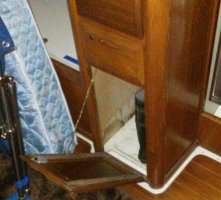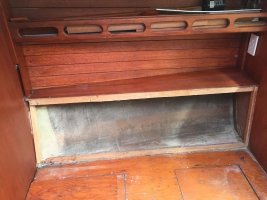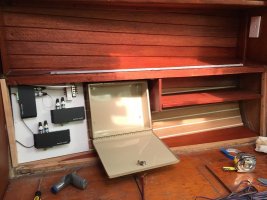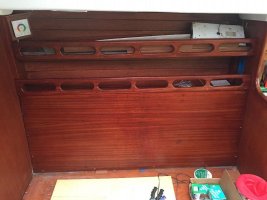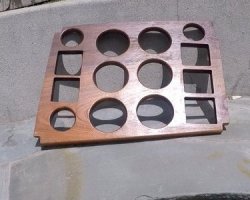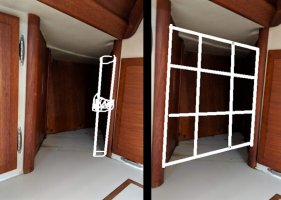I would make a plywood/teak veneer door that is held in place by barrel bolts...
I considered this but I think the door would become another relatively high-volume (relative being the key word in a crowded boat) item to have stowed somewhere when not in use. And to my eye, that would be a lot of wood in that corner there. But this would be the classiest option, by far.
Perhaps thinking further 'out of the box'...
Actually I think this is even better than this mesh web thing I was considering. I think something like this in the Phifertex "sand" color might match pretty close to the off-white countertops as well.
In discussing fasteners / construction with my friend-with-a-sewing-machine, he proposed a number of points "have you considered shelves? how heavy will items be in there?" that made me consider that I haven't actually planned my galley out very well yet, and that might take some living-in to see how I need it to be. I guess I'm currently a "cut twice, measure once" kind of person, so his enthusiasm check was helpful. I'll just look to finish the corner and use the space some, and add the final details at a later time.
Speaking of finishing, I'm thinking this back corner will be my first foray into the world of varnishing and maybe CPES. I'm new to this, and now studying manuals and youtube channels. Not sure if it's too late to apply CPES if the wood is already mostly finished, but the aft side of the cabinet goes out straight into the lazarette. Seems like it could probably be protected against "outside conditions" better.
I think my order of operations will be:
1. Fill the screwholes in the countertop (using marine-tex putty? any better material for this?)
2. Fill the screwholes in the wood cabinetry (again, what material? epoxy putty or wood filler? Any recommended products?)
3. Potentially sand and CPES the wood?
4. Re-varnish the back corner, maybe with Interlux Goldspar Satin.

